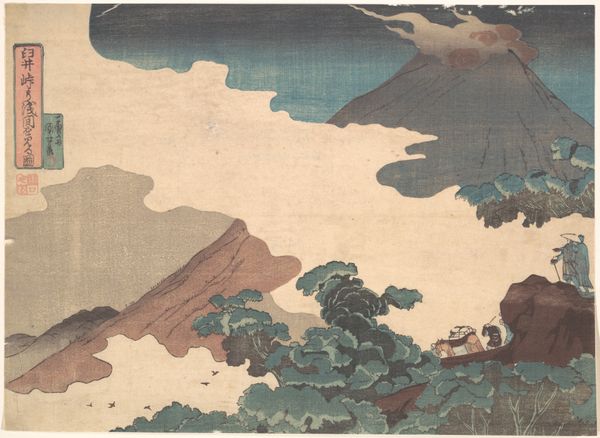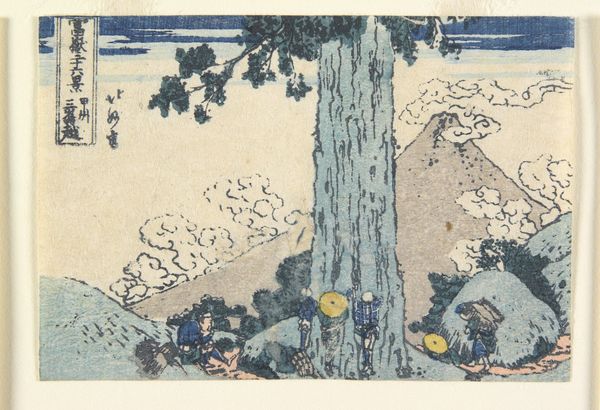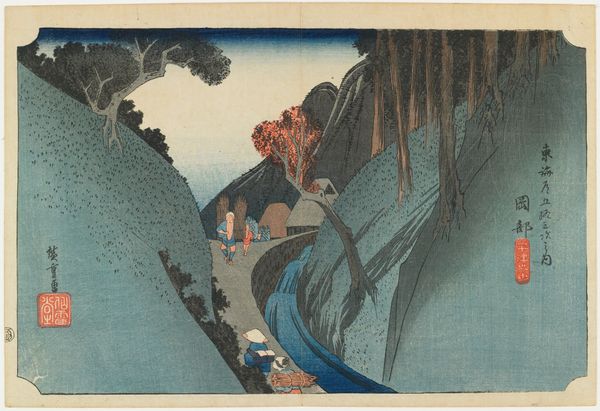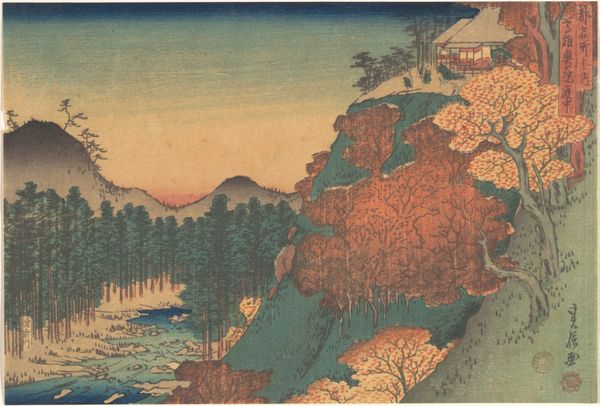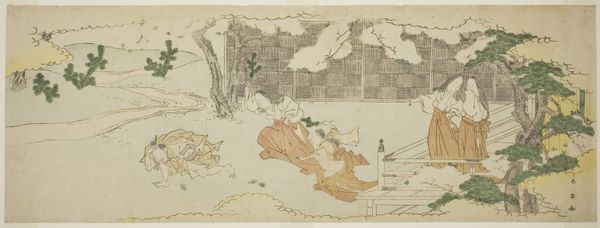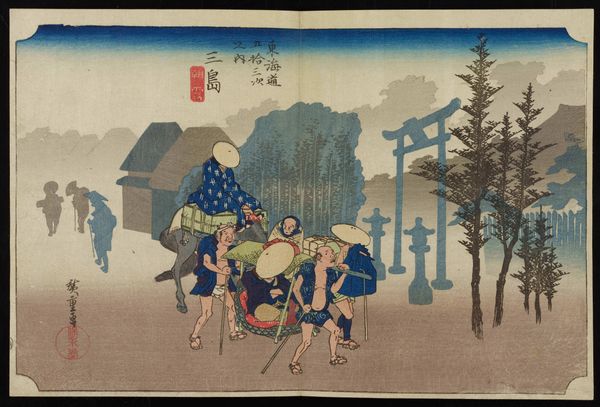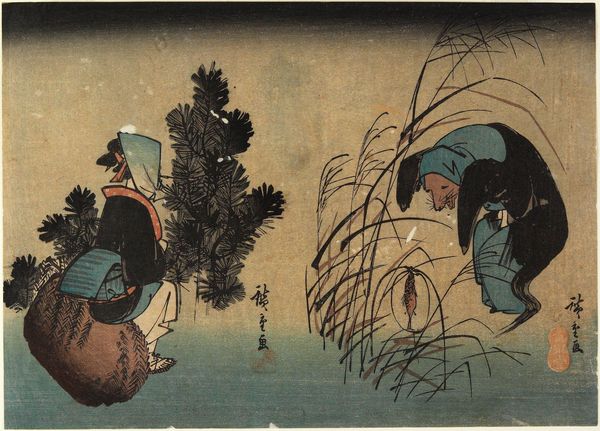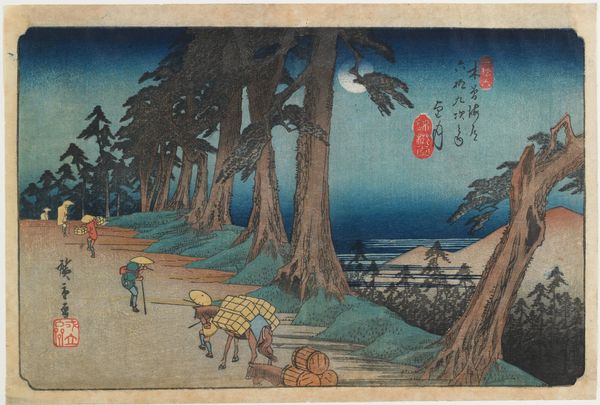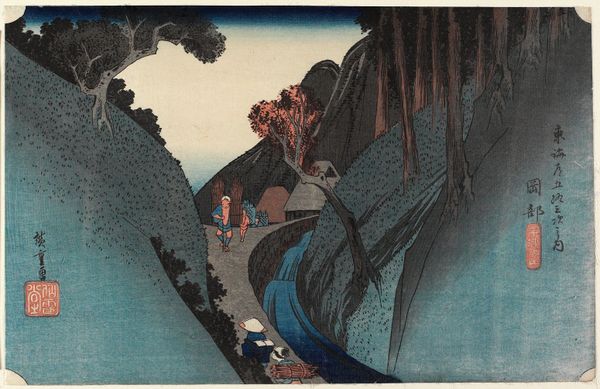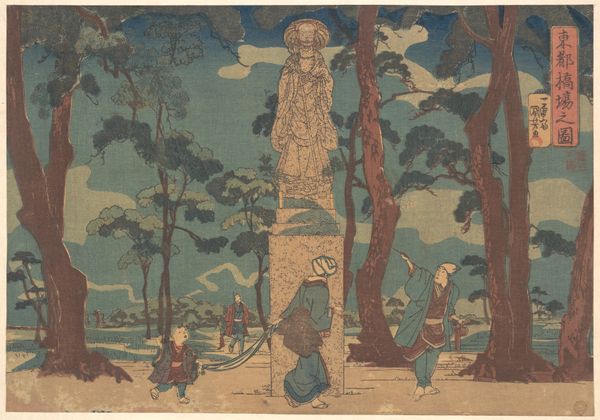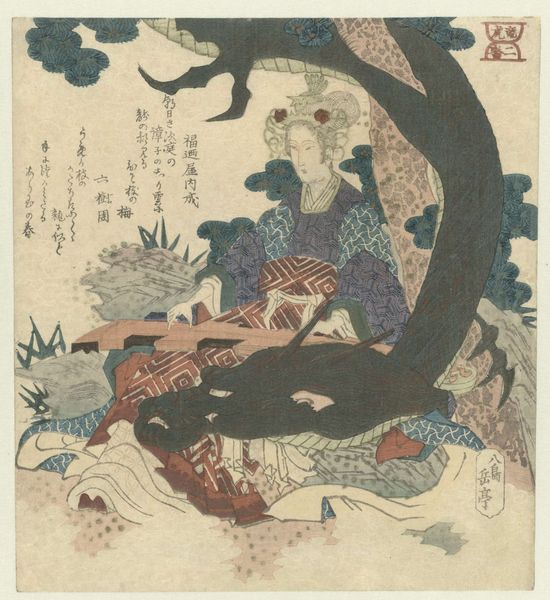
print, woodblock-print
#
tree
# print
#
asian-art
#
landscape
#
ukiyo-e
#
figuration
#
woodblock-print
Dimensions: 10 1/2 x 15 1/8 in. (26.7 x 38.4 cm)
Copyright: Public Domain
Curator: Ah, "Asakusa Imado," a woodblock print by Utagawa Kuniyoshi, dating from around 1830 to 1850. You can find this atmospheric print in the Metropolitan Museum of Art. Editor: Immediately, I'm drawn to the contrast. You've got this towering plume of smoke practically eclipsing one side, then this solitary, slender tree trying to balance it on the other. It feels like a landscape in mid-transformation, chaotic and serene all at once. Curator: That tension is key. This work, like much Ukiyo-e, provides a glimpse into a specific locale while commenting on the changing social fabric. The Asakusa district was transforming rapidly in the Edo period. These figures appear to be laborers involved in brickmaking. Editor: Right. There's something almost primordial about it, like humans wrestling creation itself into shape. And that towering smoke... it's gorgeous! But menacing. It overwhelms those little guys chipping away at the base. I can't help but think of our own relentless urban sprawl. Curator: Absolutely. We often overlook how these images reflect early industrial processes, the creation of Meibutsu, special products associated with different areas and their local economies. The resulting materials would then circulate across ever-expanding networks of commerce and culture. Here we also see Asakusa's commercial expansion encroaching on natural spaces and a sense of almost celebratory destruction. Editor: So it's this moment caught between traditional ways and progress, a kind of visual haiku of industry... but I'm also thinking of those wispy, nearly dreamlike, mountains fading in the background. It reminds me, things eventually settle or fade away with time... the frantic brickmaking will someday be its own antique. Curator: And Kuniyoshi certainly ensures that those mountains are indeed felt if not distinctly seen; that tension of fleeting presence mirrors our perception of this transitional moment that could then be endlessly reproduced as images, such as this, circulated widely throughout Edo period Japan. Editor: I see now—more than a pretty landscape, it's a history pressed onto paper. Quite clever of Kuniyoshi! Curator: Precisely. So much information, insight, and perspective embedded into one deceptively simple scene. Editor: Well, I’m off to contemplate smoke plumes and creeping industrialization! Thank you for the insight!
Comments
No comments
Be the first to comment and join the conversation on the ultimate creative platform.

